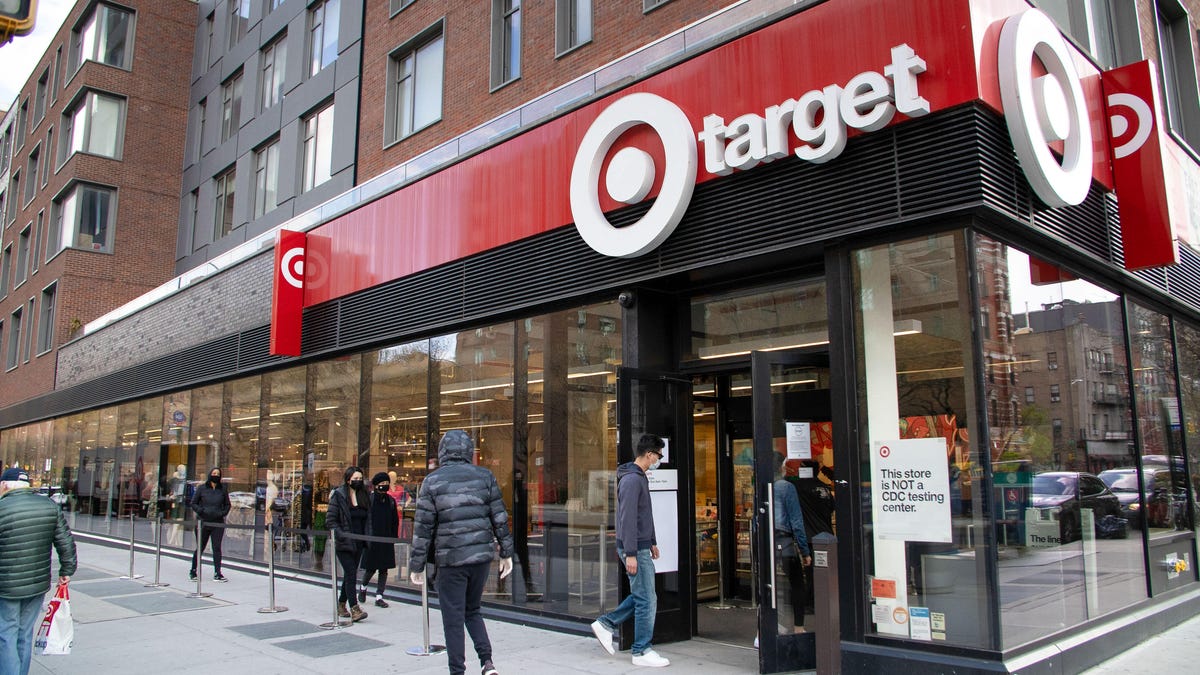Your coronavirus quarantine spending is heavy on pajamas and beer
Panic buying gives way to "adaptation buying."

Outside a Target store in New York City this month, where a social distancing line formed.
While many of us are in isolation separated from one another during the coronavirus pandemic, our shopping habits show that much of what we're doing is the same. We're buying more books, we're getting groceries online and we're definitely stocking up on beer.
According to new stats released by Adobe on Monday, daily US e-commerce sales jumped 49% between March 12 and April 11, compared with the first 11 days in March -- a massive uptick for a typically slow stretch in the retail calendar. (The World Health Organization declared the coronavirus outbreak a pandemic on March 11.) That growth was aided largely by blanket stay-at-home orders that have shuttered malls and restaurants across the country.
Some of the biggest online sales gains point to our changed lifestyles, with book sales up 100%, alcohol sales up 75% and electronic sales up 58%. Online apparel sales are up 34%, but prices have dropped significantly and purchases are clearly veering toward comfort wear: Pajama sales soared 143%, while sales for pants tumbled 13%, Adobe reported.
Online grocery, which had been a small niche in the massive food industry, has seen sales more than double. Also, orders placed online and picked up at stores soared 208%.
Adobe's latest numbers show how e-commerce has grown to become a critically important part of people's lives during the pandemic, with millions of people told to stay home. Another sign of e-commerce growth during the crisis should come on Thursday, when Amazon reports its latest quarterly results, with its revenue expected to jump over 20%.
Traditional retailers, meanwhile, have been experiencing a lot of pain. Overall US retail sales dropped 8.7% in March from February, the Commerce Department reported earlier this month. Some of the worst hit retailers were clothing stores, car dealerships, furniture stores and gas stations, while grocery stores saw a huge increase.
Kevin Fu, an Adobe spokesman, said Tuesday that online grocery and curbside pickup services were already expected to grow in the next few years, though neither had yet reached the mainstream prior to the coronavirus outbreak. The quarantines have become a "forcing function" to get consumers to try these new concepts, he said.
"Retailers who invested in it early got a chance to test it and refine, and have been better able to manage the surge in demand," Fu said of curbside pickup. "It is fair to say they are capturing new customers in the process."
He added that specific product sales are shifting from panic buying to "adaptation buying," as indicated by the growth in fitness equipment as gyms are closed, toys and games to stave off boredom, and pajamas because why bother wearing slacks anymore. Fu said that while none of these items are considered essential goods -- like toilet paper and food -- they should help drive more parts of the economy.

